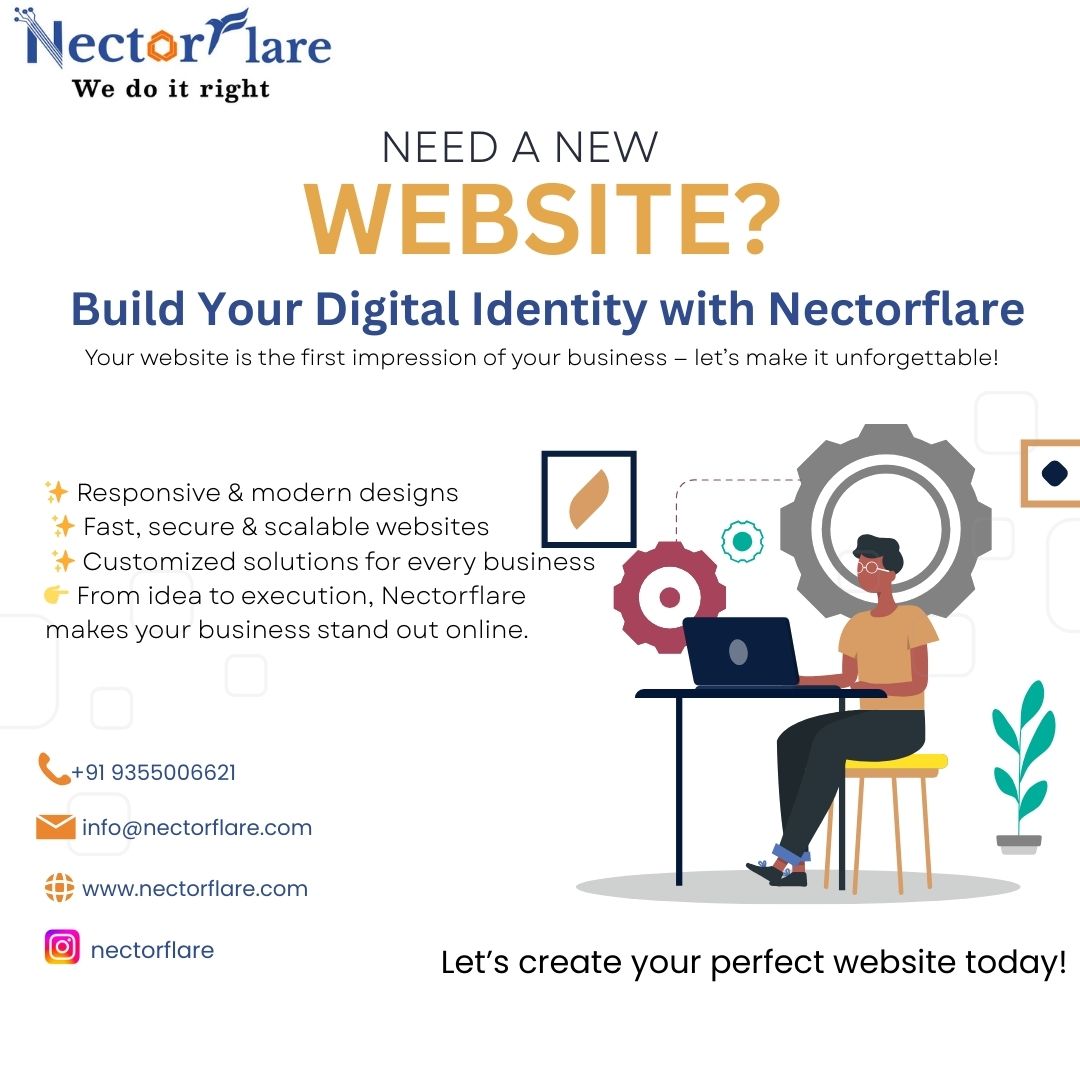
Many people overlook website footer design. But small businesses can use it to guide visitors, build trust, and improve navigation. A well-designed footer reflects your brand and helps users take action. In this blog, you’ll explore practical ideas to improve your footer and make it work for your business. In this blog, practical ideas will be shared to help footer design get optimized for modern websites.
Why Website Footer Design Matters
The footer sits at the bottom of every webpage. Visitors often scroll down with purpose, looking for key information. You can place contact details, important links, and legal pages here. A smart footer improves SEO, boosts engagement, and builds credibility.
To Begin With: It’s More Than Just the Bottom
Many people think the footer is just the last part of a webpage. However, it plays a much bigger role. The footer helps users find important information, navigate the site, and trust your brand. Because it appears on every page, it becomes a consistent tool for communication.
For Example: What Users Expect to Find
Visitors often scroll to the bottom looking for contact details, legal pages, or quick links. For example, they may want to read your privacy policy, check your address, or follow your social media. Therefore, placing these elements in the footer improves user experience and builds credibility.
It Builds Trust and Credibility
Moreover, a well-designed footer shows professionalism. Including your business address, phone number, and email builds trust. For example, adding secure payment icons or certifications reassures customers that your site is safe.
On the other hand, a cluttered or missing footer can make your site feel incomplete or unreliable. Therefore, investing time in footer design helps build confidence in your brand.
To Sum Up: Small Details, Big Impact
Website footer design may seem minor, but it plays a major role in how users interact with your site. To sum up, it improves navigation, builds trust, boosts SEO, and supports your brand—especially for small businesses trying to grow online.

So, don’t treat your footer as an afterthought. Design it with purpose, and your visitors—and search engines—will thank you.
Key Elements That Should Be Included In Website Footer Design
- Navigation Links
Link to important pages like About, Services, and Blog to help users explore your site. - Social Media Icons
Connect your Facebook, Instagram, LinkedIn, and other profiles to grow your online presence. - Newsletter Signup
Include a simple form to collect emails and build your mailing list. - Legal Pages
Link to your Privacy Policy, Terms of Service, and Cookie Policy to stay compliant. - Copyright Notice
Add a copyright line to protect your content and show professionalism. - Call to Action (CTA)
Place a button or link that encourages users to take action—like booking a call or downloading a guide. - Contact Information
Add your phone number, email, and location so users can reach you easily.
Design Principles to Follow In Website Footer Design
Website footer design is shaped by clarity and simplicity. When building a website, small businesses often focus on the header, homepage, and product pages. However, the website footer design is just as important. To begin with, the footer is the last thing visitors see—and often the first place they look for key information. Therefore, designing it well can improve user experience, boost SEO, and build trust.
Keep It Simple and Organized
A cluttered footer confuses visitors. So, keep it clean and easy to scan. Use clear headings like “Contact Us,” “Quick Links,” or “Legal Info.” For example, group related links together and use bullet points or columns to separate sections.
In addition, avoid adding too many links or images. A simple layout helps users find what they need without feeling overwhelmed.
Include Essential Information
Your footer should contain the most important details about your business. For example, add your phone number, email address, and physical location. Moreover, include links to your privacy policy, terms of service, and return policy if you sell products.
Because this information builds trust, it’s especially important for small businesses trying to grow online. As a result, visitors feel more confident reaching out or making a purchase.
Add Navigation Links
Website footer design should support site navigation. Therefore, include links to your main pages—like “About Us,” “Services,” “Blog,” and “Contact.” Additionally, you can add links to popular blog posts or FAQs.
On the other hand, don’t duplicate your entire menu. Choose the most useful links for users who scroll to the bottom.
Footer Layouts That Work
Choose a layout that fits your business needs. Here are some popular options:
- Single Column Layout
Use a vertical layout for minimal websites or mobile-first designs. - Multi-Column Layout
Organize content into sections side by side for better structure. - Grid-Based Layout
Arrange links, icons, and forms in a grid to create balance. - Sticky Footer
Keep a footer fixed at the bottom of the screen so users always see your CTA.
Pick a layout that matches your brand and supports your goals.
Website Footer Design for Mobile Devices
Mobile users interact with footers differently. To improve their experience, stack content vertically, resize icons for touch screens, and simplify forms. Shorten navigation links and increase padding for better spacing.
These adjustments make your footer easier to use on smartphones and tablets. As mobile traffic continues to grow, optimizing your footer for small screens becomes essential
Use Your Footer to Strengthen SEO
Website footer design is used to support SEO. Your footer can support your SEO efforts in several ways. Add internal links to help search engines crawl your site. Include relevant keywords to boost page relevance. Embed structured data to improve visibility in search results. Add your business name, address, and phone number to enhance local SEO.
By optimizing your footer for search engines, you increase your chances of ranking higher and attracting more traffic.
Add Trust Signals to Build Credibility
Visitors often look for reassurance before taking action. Use your footer to display trust signals such as:
- Certifications or awards
- Client logos or partner badges
- Secure payment icons
- Testimonials or reviews
These elements reduce hesitation and encourage users to engage with your brand.
Avoiding Common Mistakes in Website Footer Design
To maintain a professional appearance, avoid these common pitfalls:
- Overcrowding
Don’t overload your footer with too many links or sections. Keep it focused and clean. - Poor Contrast
Ensure your text stands out against the background. Use high-contrast colors for readability. - Broken Links
Test your footer links regularly and fix any errors to maintain trust. - Missing Legal Pages
Always include required policies to stay compliant and protect your business. - No Mobile Optimization
Adapt your footer for mobile devices to ensure usability across all platforms.
By addressing these issues, you improve the overall quality of your website footer design.
Using Tools to Streamline Website Footer Design
To simplify the design process, use tools that offer templates, drag-and-drop features, and responsive previews. Here are some popular options:
| Tool | Features |
| Elementor | Visual editor for WordPress footers |
| Wix Editor | Easy customization with built-in blocks |
| Squarespace | Pre-designed layouts with flexible styling |
| Figma / Canva | Design mockups and plan layout visually |
These tools help you create a professional website footer design efficiently and effectively.
Drawing Inspiration from Real Website Footer Designs
To illustrate, studying real-world examples can spark ideas:
- Minimal Footer – Focuses on essential links and contact info
- Content-Rich Footer – Includes blog links, social icons, and CTAs
- E-commerce Footer – Displays product categories, payment icons, and return policies
- Local Business Footer – Highlights address, map, and local keywords
As I have said, analyzing these examples helps you refine your own website footer design and tailor it to your audience.
Reinforcing Your Brand Through Website Footer Design
Your footer should reflect your brand identity. Use consistent colors, fonts, and logos. Add taglines or mission statements. Additionally, link to your About page or brand story.
With this intention, you create a cohesive experience and help users remember your business. In essence, a branded website footer design strengthens recognition and builds loyalty.
Ensuring Accessibility in Website Footer Design
Accessibility ensures all users can interact with your footer. Use readable text, strong contrast, and clear labels. Support keyboard navigation and test your footer with accessibility tools.
Furthermore, follow WCAG guidelines to make your site inclusive. In the final analysis, an accessible website footer design improves usability and expands your audience reach.
Driving Conversions with Website Footer Design
Encourage action by placing CTAs in your footer. Use buttons, forms, and links that guide users toward the next step.
Examples include:
- “Subscribe to Our Newsletter”
- “Book a Free Consultation”
- “Download Our Free Guide”
- “Follow Us on Social Media”
To emphasize, strategically placed CTAs enhance your website footer design and increase engagement.
Maintaining Your Website Footer Design Over Time
To be sure, your footer needs regular updates. Fix broken links, refresh contact info, and add new pages. Apply legal changes promptly. Schedule monthly checks to ensure everything stays accurate.
Use analytics tools to track footer clicks. Then again, analyze user behavior and make improvements based on data. In due time, a well-maintained website footer design continues to deliver value.
Final Thoughts
To summarize, website footer design plays a vital role in user experience, branding, and business growth. When you design your footer thoughtfully, you guide visitors, build trust, and support your digital strategy. By following best practices and avoiding common mistakes, you turn your footer into a powerful tool that drives engagement and conversions.
💡 Need a Custom Footer That Converts?
At NectorFlare, we specialize in modern, conversion-focused website footer designs tailored for small businesses. Whether you’re launching a new site or refreshing an old one, we’ll help you create a footer that works hard for your brand.
✨ Click here to explore footer design services by NectorFlare
Let’s build something that guides, converts, and reflects your brand beautifully
To Know More About Our Services, Click Here.
People Also Searched For: Looking for a Website Designer Near Me? Here’s Why NectorFlare Is Your Best Choice